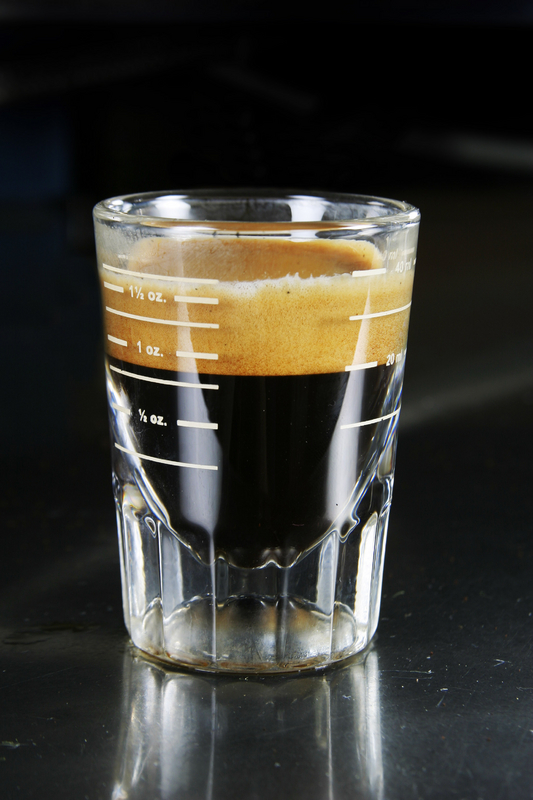Cooking & Baking
Related: About this forumHow to know great espresso from everything else
This is another thread which promotes the idea of coffee as culinary art.
I love espresso, but more specifically I love great espresso. And by espresso, I don't mean espresso based drinks. The reason I suspect that more people don't love espresso in the US, is because so few have ever had great espresso. 99% of espresso in the US is not great espresso. While it may be suitable for drowning in 12 oz (or more) of hot milk, it's just not what I would call great espresso.
The good news is that most larger cities will usually have at least one outlet for great espresso. Some smaller cities do, and you might even find it in the suburbs or in small towns. The problem is that if you don't know what great espresso is, you really have no way of knowing if that's what you're getting, even if you do actually manage to get it. Espresso is generally an acquired taste type thing much like brewed coffee is. Most people who try espresso (good or excellent) aren't going to like it the first time out, but those who stay with it learn to appreciate the complexities and subtle flavors that great espresso offers.
So if you dare to venture down the path of espresso love, the first real trick is to separate the good from the bad. While it's pretty hard to know what a great espresso is if you've never had one, it's relatively easy to spot the bad ones. I'm not going to cover home espresso, which is a completely different topic.
The first thing to note is what the coffee house looks like when you enter. If you see manually operated espresso machines, and strange coffee brewing devices that you've never seen before, this is a good sign. Starbucks and many other chain type espresso shops generally use fully automatic machines. You push a button, you get a shot of espresso. While these machines are certainly capable of a good espresso if operated correctly, they will not likely ever make a great one. The reason is because there are dozens of different variables that go into good espresso. A competent barista operating a manual machine can always do better than a fully automatic machine simply because they can adjust all these variables on the fly as needed. A machine can't do that, at least the best machines in existence now can't. Maybe some day. The problem with making espresso is that great espresso can only come from within a very narrow band of temperature and pressure. If the barista misses the mark by only a couple of degrees, you just went from great espresso to good espresso, at best.
If you see manually operated machines with the portafilter (the thing that holds the coffee which has a handle) off and laying on the counter next to the machine, you are not going to get a great espresso, or even a good one. If the barista also buses tables and pours alcoholic drinks, you probably aren't going to get a great espresso. Great baristas only do coffee.
If the espresso comes in a paper cup or a 12 oz mug, your chances of getting a great espresso just went down considerably. Great espresso is typically served in espresso cups, which typically hold no more than 2 oz. If you are served espresso in a small ceramic cup, with a saucer, this is a good sign. When you look at the espresso, if you see black, you didn't get a great espresso. Great espresso has a brown foamy layer on top called crema. Bad espresso may also have crema, so this doesn't mean you got a good one, but great espresso always has crema. Crema is made up of essential oils from the coffee bean which will be in the form of small bubbles which float to the surface. The crema itself should also be noted. When (and if) you sprinkle sugar on top, it should float on top of the crema for an instant before it sinks. When you stir the espresso, the crema should remain, even after stirring. If it disappears rapidly, you didn't get a great espresso. For the first couple of sips, you will get most of the crema and what will be left is the black (or very dark brown) coffee underneath. As such the first couple of sips will be different in character from the rest. The first couple of sips will coat your tongue with the essential oils from the coffee. It will taste neither overly bitter or overly sour (which are indications of poor temperature control). What you taste from there will reflect the particular variety of bean that was used, and the manner in which it was roasted. It should literally taste as good as coffee smells. That's how you know you got a great espresso. The taste will linger on your palate long after the espresso is gone and you will literally feel as if your mouth is coated with coffee oils (which it is). Good coffee houses will often serve a glass of sparkling water along with espresso, to help cleanse your palate from the coffee oils. If they don't, order a sparkling water to go along with your espresso. It's a great combination.
